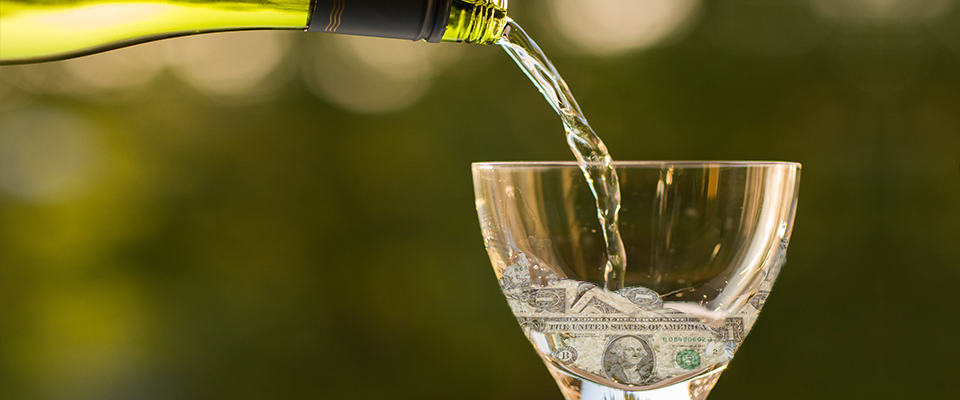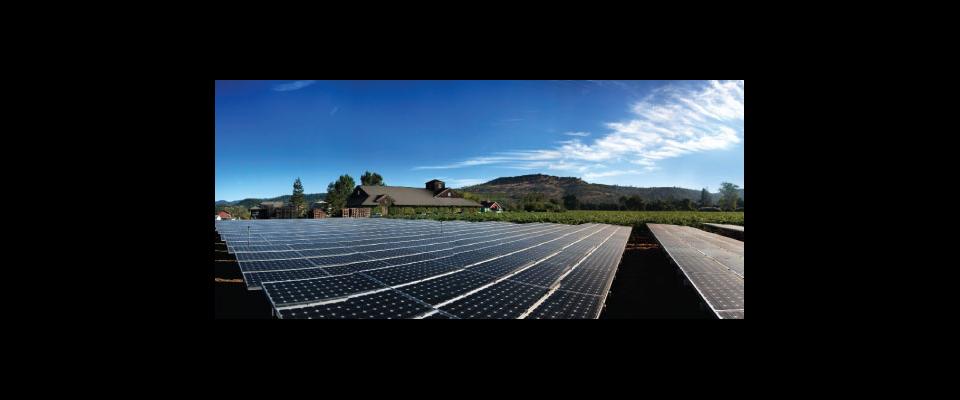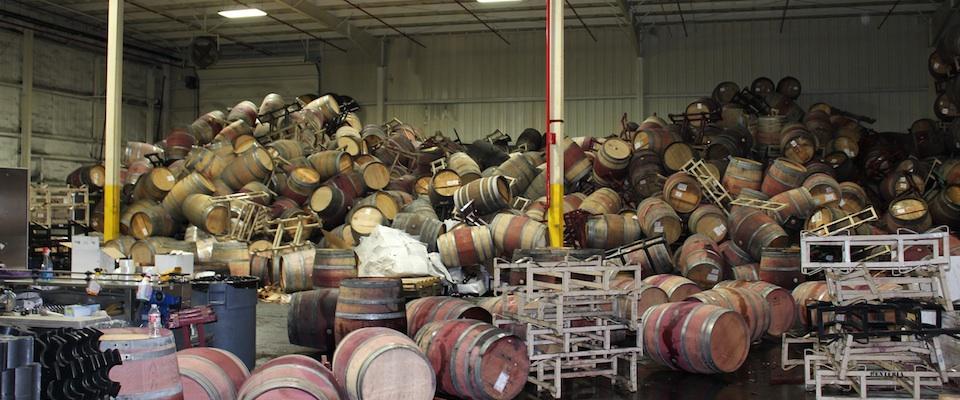Stu Smith and his brother, Charlie, put down a $500 option on about 200 acres of land on the slopes of Spring Mountain in 1971, eventually purchasing the property for $70,000. The views of the adjacent Napa Valley were stunning, and Smith, who had developed a passion for wine while completing his undergraduate degree in economics at Berkeley, was determined to get into the nascent California premium wine business. With Stu handling vineyards, sales and marketing and Charlie taking on winemaking, the brothers opened Smith-Madrone Winery, producing about 4,000 cases of high-end wine per year.
Unlike most wineries, Smith-Madrone doesn’t buy fruit from outside sources. All the wine is estate-bottled, meaning it is produced solely from grapes grown on the Smiths’ 38 acres of vineyards. The winery has a reputation for both wine quality and business longevity. Most of the small wineries in the Napa Valley appellation have been subsumed by corporations or, in some cases, simply gone belly-up. But Smith-Madrone has persevered and survived, and today Stu Smith—once viewed as the Napa Valley’s young upstart—is a respected elder, the doyen of hillside viticulture. Both erudite and homespun, he comfortably discusses the finer points of Adam Smith’s Wealth of Nations while pruning his cabernet sauvignon vines. He has a reputation for geniality and community goodwill; but that doesn’t stop him from unabashedly fighting local efforts to restrict upland vineyard development.
California caught up with Smith on a recent afternoon as he attended to various chores around his vineyards.
You’ve been part of the Napa Valley wine industry for almost 50 years. Not to belabor the obvious, but the business has changed. How would you characterize it?
When we started in the early seventies, the valley was provincial, sleepy. There were no good restaurants, no expensive hotels. It was agricultural. Yes, people grew wine grapes and made wine, but other crops and livestock were also important. The industry was really taking off by the 1980s, of course, but even then, there weren’t that many of us. We all knew each other. The atmosphere was still collegial.
Any there anecdotes that illustrate that?
Here are a couple: One time I was pumping gas into my truck at the Chevron station in downtown St. Helena when Tim Mondavi [son of Robert Mondavi, and the family winemaker] pulled up on the other side of the pump and started filling up. We chatted, and he said, ‘Hey, wait a minute, I have something I’d like you to try,’ and he pulled out a shiner [unlabeled wine bottle]. It was a champagne bottle, but with a crown cap, not a cork. Tim said, ‘Here, we’re experimenting with sparkling wine. Try this out and tell me what you think of it.’ I can’t think of anything like that happening today—the winemaker from one of the largest wineries in the valley casually asking another winemaker to try an experimental product. And it was very good, by the way. I wished they had gone into commercial production.

Another incident involved Bob Trinchero and Louis Martini. Bob owned Sutter Home Winery, and he developed and made a fortune off White Zinfandel, but this was before that really took off. He had some equipment break down at a critical juncture, and in desperation he called Louis—who was just across Highway 29—and asked for some help. And Louis just opened his equipment yard, his shop, everything, and told Bob to rummage around and take whatever he needed.
And now?
Well, now, of course, the people getting into it didn’t start their operations on shoestrings like Charlie and I did, nor are they [legacy] viticulturalists and winemakers—people, in other words, who were first and foremost dedicated to wine production. It’s more like Mr. and Mrs. GotRocks sell out their widget company in Silicon Valley for a couple of gazillion dollars, and then they say to each other, ‘Gee, what should we do now?’ And they decide they just love the Napa Valley so they come up here and build a massive winery and a 15,000-square-foot home and there are Corinthian columns and fountains everywhere, and the last thing they have to worry about is turning a profit. You may know who some of these people are, but you don’t know them. You don’t interact with them. You’d never borrow their tractor.
Even a casual visitor can see the impacts in the Valley: hundreds of wineries, most with event centers, and solid gridlock along Highway 29 from Napa to Calistoga.
Yeah, and it’s not just that. The costs involved in visiting the valley now are astronomical. Wine tastings used to be free—that’s practically impossible these days for anyone, but we [Smith-Madrone] try to keep things reasonable, only charging $25 per person. But some wineries charge $250 or more for a tasting, and insist on reservations. And sometimes they’ll tell you they’ll get back to you and then do a background check on you, and if they feel you aren’t wealthy or socially significant enough they’ll call you back and say, terribly sorry, we’re fully booked. You want to go out for dinner? Plan on spending $200 to $250 a person. And if you can get into the French Laundry, maybe you and your partner can get out for $2,000. Hotel rooms are $500 a night—even $1,000 a night.
What has that meant for long-time Napa Valley residents?
Alienation. Years ago, I helped establish the Napa Valley Wine Auction. It was a good marketing vehicle for our wines, and generated some excellent publicity. The wines sold for good prices, and the money went to a good cause [the Queen of the Valley Medical Center]. But now, when you literally have someone paying $500,000 for two bottles of wine—well, that doesn’t connect with the reality that most of the people who live here experience. They’re looking at that and saying, ‘Who are these people?’ My wife and I live in St. Helena, in a simple house. It’s not much—maybe it’d cost you $250,000 or $300,000 outside the Bay Area. It’s essentially a teardown in St. Helena. But because it is where it is, it’s worth more than $1 million. Or the lot is, anyway. And what’s even stranger is that 40 to 50 percent of the homes in St. Helena are vacant these days. They’re the second or third or fourth homes of extremely wealthy people, people who may visit on occasional weekends, if that. It’s eerie. You don’t know your neighbors. Community businesses, like the hardware store, are suffering. Student enrollment is shrinking. It isn’t healthy.
Do the newcomers have anything in common with the old guard?
Maybe jumping through planning hoops. Trying to get approval for new vineyards, for example.
You have something of a reputation for fighting back vigorously against increased vineyard regulation—especially for hillside vineyards.
The regulatory burden in general is extreme. We built this winery ourselves, including the stonework. It’s small, it’s modest—no Corinthian columns here, you’ll notice—but it suits our needs. I asked the county building inspector what we needed for construction, and he said bring in a sketch and a check for $150. I drew up plans in about eight hours, and got approved. I admit that experience ruined me. If I wanted to do the same thing today, it’d take six or seven months and cost between $20,000 to $50,000. Also, I have 38 acres of vineyard [on a 200-acre property], and I have six or seven additional acres that I’d like to plant. To do that, I’d have to clear the plan with the state under the California Environmental Quality Act. I’d have to get an erosion control plan approved by the county. And I’d have to indemnify the county in case anyone sued—which is highly possible, even likely these days. So bottom line, I’d have to shell out $100,000 to $150,000 just for compliance, exclusive of actual development costs. Everyone who wants to put in vineyards faces these hurdles, of course, but it’s the smaller vintners who are really hurt. The only people who can afford it are the super wealthy. We used to joke that the billionaires are driving out the millionaires in this business. But increasingly, it’s true.
Your efforts have been at least somewhat successful. You led the campaign against Measure C, a 2018 Napa County referendum that would’ve restricted hillside vineyard development, and it was defeated. Your opponents, however, say that such ordinances are necessary to maintain the forested slopes that surround the Napa Valley, preserve biodiversity, and stem erosion. Why are they wrong?
Environmentalism, as it’s widely perceived, is completely different from conservation. Destroying small-scale viticulture—which is what’s practiced here on Spring Mountain, certainly—and depriving land owners of their property rights won’t produce major conservation gains for the region. Wildlife is abundant on my property, and soils are stable. The real danger lies in development pressure. Back in the 1960s, profitable agriculture was seen as the only thing that could stop rampant development. So in 1968, the county’s supervisors established the nation’s first agricultural preserve. Growers gave up their rights to subdivide in exchange for tax protections. And that strategy worked, which is why we see vineyards in the Napa Valley instead of housing tracts. If we’re going to continue to enjoy the real conservation benefits of sustainable viticulture, we can’t make it impossible for growers to conduct business.
You’ve also inveighed against biodynamic farming.
As differentiated from organic and sustainable farming, which are legitimate agricultural practices. The problem I have with biodynamic farming is that it’s unsupported by science. Its adherents claim with utterly no proof that the “living soils” it supposedly produces result in better expressions of terroir in wines. Further, by claiming superiority—again, with no substantiation—they implicitly belittle all other wines. I care as much about the vitality of my soils and the health of the environment as anyone else, so I resent anyone claiming a bogus method produces better soils and better wines than mine. And time has vindicated me on this. Years ago, several wineries were flogging their biodynamic credentials. Since then, they’ve quietly backed off.
So, as you look down the road, what do you see—for both yourself and the Napa Valley wine industry?
If I were smart—and apparently I’m not—I would have sold out two years ago, when property values were at their peak. So my exit strategy is to go out of here feet first. It’s literally impossible for me to retire—and besides, I love what I do. One thing I have learned is that you must be engaged. Farmers generally think they don’t have to be involved in politics. Wrong. The world is going faster and faster, and you’d better move with it or you’ll be left behind. But I’m also a realist, and that means I’m basically pessimistic about the industry. The Baby Boomers are drinking less, and they’re starting to die out. Millennials don’t have the money to buy Napa wine, and they seem to prefer cocktails and beer anyway. And what really frosts my ass is that we’ve saddled them with a mountain of educational debt. It’s scandalous. They’re struggling to survive, so fine wine is hardly an issue of concern with them. And of course, the biggest impacts are going to fall on the smaller producers. My son’s in business with me, but he can’t afford to buy a home here. I doubt he ever will. What kind of a future is that?





















